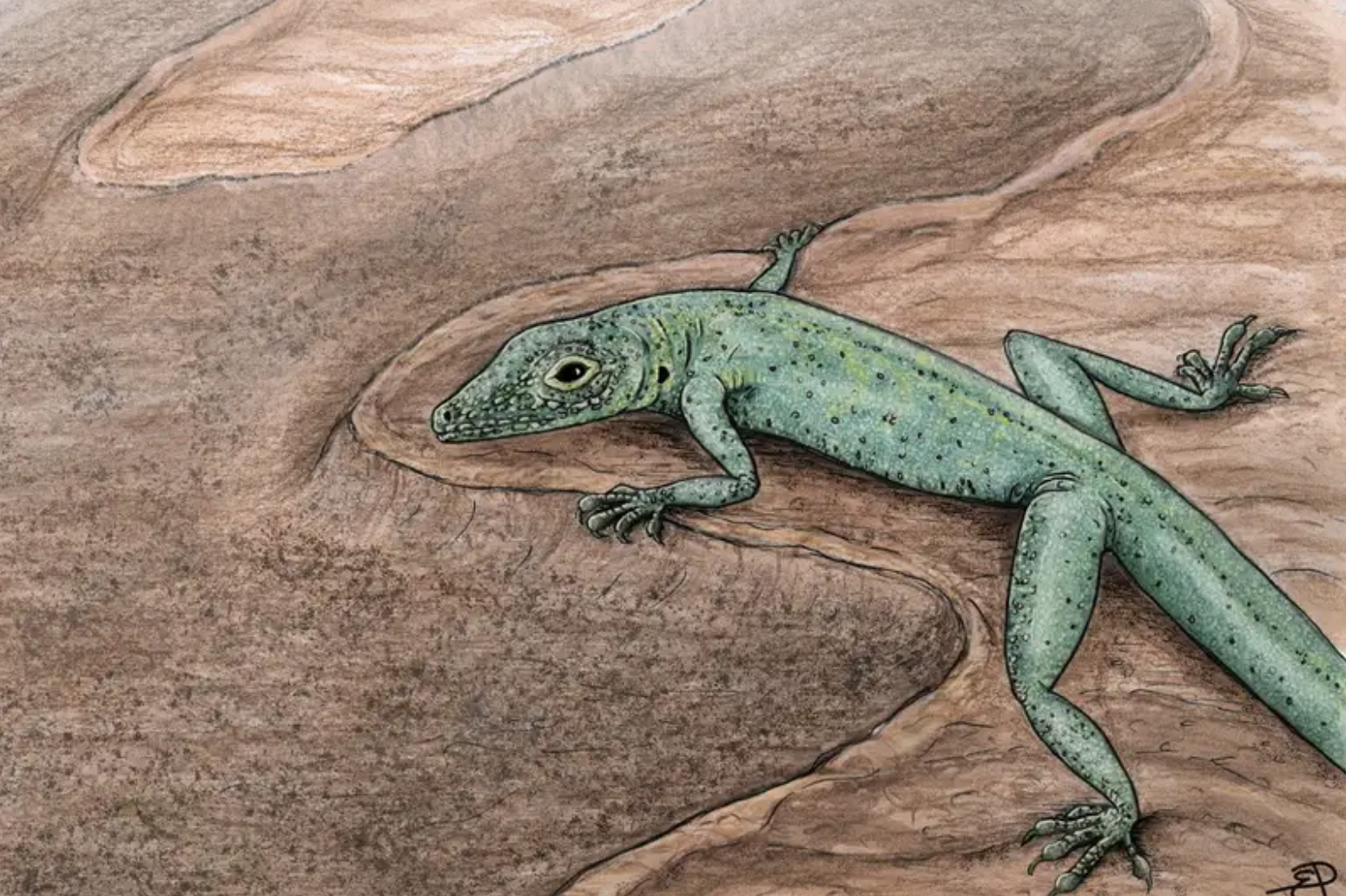

While lizards and dinosaurs trotted the Earth together, lizards were the one of the newer animals on the block during the Middle Jurassic period. Scientists are still unraveling their unique history. Now, roughly 166 million years later, a nearly-complete fossil of a lizard skeleton is helping scientists fill in some of those evolutionary gaps.
The specimen was discovered on Scotland’s Isle of Skye and is called Bellairsia gracilis. Bellairsia was a tiny lizard ancestor and was only about two inches long. The “exceptional” new fossil is described in a study published this week in Nature. The fossil is only missing its snout and tail and is likely the most complete fossil lizard of this age anywhere in the world.
[Related: This 6-inch-long Jurassic creature does a great lizard impersonation.]
Within Bellairsia‘s skeleton are a mixture of older ancestral features and modern features, which provides evidence of what the ancient ancestor of present-day lizards might have looked like. “This little fossil lets us see evolution in action,” said first author Mateusz Tałanda from the University of Warsaw and University College London, in a statement. “In paleontology you rarely have the opportunity to work with such complete, well-preserved fossils coming from a time about which we know so little.”
A team led by Oxford University and the National Museums Scotland first found the fossil in 2016. In addition to its beautiful scenery, the Isle of Skye is a hot spot for fossils (including ones from extinct amphibians and mammals) that is giving scientists a window into how present-day animal groups evolved through time.
“Bellairsia has some modern lizard features, like traits related to cranial kinesis–that’s the movement of the skull bones in relation to one another. This is an important functional feature of many living squamates,” Tałanda said.
Squamates are a huge present-day animal group that includes lizards, snakes, chameleons, and geckos. With more than 10,000 species of squamates living today, they are one of the most species-rich living vertebrate animal groups. The smallest living squamate is the Virgin Islands Dwarf Sphaerodactylus, coming in at only about an inch long and less than one-tenth of an ounce. The Komodo Dragon is the largest living squamate, which has been known to reach about 10 feet long and weigh over 350 pounds.
[Related: This pterosaur ancestor was a tiny, flightless dog-like dinosaur.]
Elsa Panciroli from the Oxford University Museum of Natural History and National Museums Scotland is one of the study’s co-authors and also was the lucky scientist to first discover the fossil. “It was one of the first fossils I found when I began working on Skye,” Panciroli said in a statement. “The little black skull was poking out from the pale limestone, but it was so small I was lucky to spot it. Looking closer I saw the tiny teeth, and realized I’d found something important, but we had no idea until later that almost the whole skeleton was in there.”
While scientists know that the earliest origins of squamates lie about 240 million years ago during the Triassic period, a lack of fossils from both the the Triassic and Jurassic period has made their early evolution and anatomy difficult to trace. Analyzing the new fossil alongside some living and extinct squamates shows that Bellairsia belongs to the “stem” of the squamate family tree. It likely split from other lizards just before modern groups of lizards arose. It also supports the idea that geckos branched out early and that Oculudentavis is actually a stem on the squamate family tree and not a dinosaur.
“Fossils like this Bellairsia specimen have huge value in filling gaps in our understanding of evolution and the history of life on Earth,” said co-author Roger Benson from the University of Oxford, in a statement. “It used to be almost impossible to study such tiny fossils like this, but this study shows the power of new techniques including CT scanning to image these non-destructively and in great detail.”
